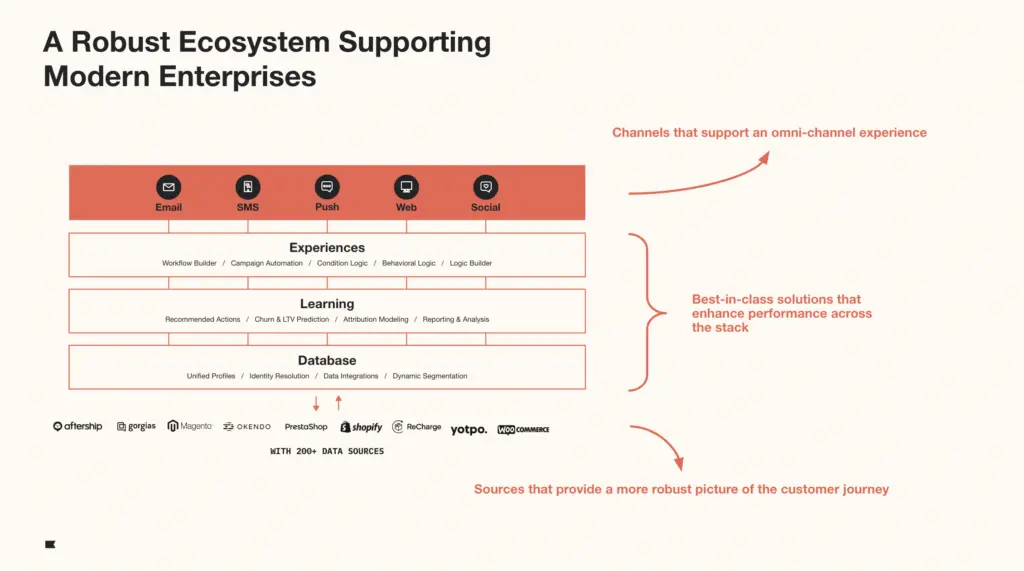More integrations, more data in a single place: Klaviyo introduces our technology partner program
Efficient businesses need tools that help them connect the dots between various activities that put the power of automated activation in their team’s hands.
That is why today, Klaviyo is proud to announce the official launch of our technology partner program.
This program signals Klaviyo’s intent and increased investment in our ecosystem so that more technology companies across all sectors can integrate with Klaviyo, build apps, and help mutual customers get up and running better, and faster, than ever before.
The Klaviyo integration ecosystem is already more than 260 strong, including technology tools and integrations that address ecommerce platform integrations, reviews, referral programs, customer journey optimization, conversion rate optimization, attribution, quizzes and surveys, payments, loyalty, influencer marketing, support and Helpdesk software and more.

These integrations also mean less stitching together of data for our customers. When the tech platforms you use and love integrate with Klaviyo, your central source of data truth becomes stronger, your customer profiles more complete, and your segmentation and personalization opportunities endless.
Less stitching, more winning
Klaviyo has always held that spirit of connectivity at heart.
The company was first built as a database to collect all the ecommerce data that was falling through the cracks. Just like now, businesses a decade ago were struggling to keep track of their customer data: names, phone numbers, emails, their favorite colors or product categories, the pages they visited most often, and more.
But stitching that together wasn’t enough.
Businesses needed to act on that data, make decisions based on that data, and transform their organizations according to that data. That is when Klaviyo added its activation layer (or the experiences layer), primarily email marketing and then also SMS marketing, on top of what now is a CDP (the database layer).

Still, our teams know that even this is not enough. Klaviyo is the central source of truth for so many brands, but our more than 143K customers are all unique in their own way.
They have different marketing strategies, different products and SKUs, different customers, different margins. It makes sense, then, that they’d have different tech stacks, too.
After all, the tools you use to grow your business as efficiently as possible need to work for your team and in the way that you need them to function.
Klaviyo has long been agnostic when it comes to other tools in the ecommerce ecosystem, but we think we can do even more. As one of the industry’s best CDPs according to G2’s grid, we think we must do more.
This is why we are formally launching our tech partner program. This program will mean:
- New benefits for technology partners who are included the program
- Additional documentation for developers and technology companies to build tools into our ecosystem
- A faster-growing third-party integration ecosystem
- Increased existing integration capabilities as companies develop with our new API endpoints
We believe that the tech stack you choose should be based solely on your own needs, not dictated by a lack of integration or far too expensive implementation.
We’re here to help our customers grow faster and more efficiently, without data stitching headaches along the way.
This is one way we’re making business better for us all.

Related content

Discover how audience filters let you personalize every message in an omnichannel campaign using real-time data, behavior, and channel preferences.

Klaviyo welcomes Chano Fernández as Co-CEO to help accelerate global growth and lead the next era of AI-powered customer experiences.

Discover how cross-channel marketing and the rise of SMS shaped BFCM 2025. Learn why email + text orchestration drove record engagement, efficiency, and revenue.